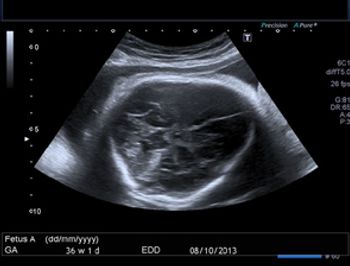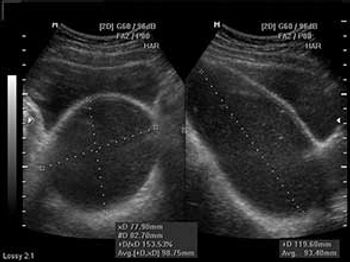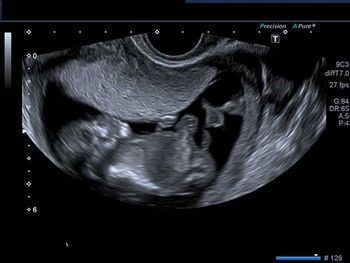
Contemporary OB/GYN technology columnist Brian A. Levine, MD, MS, discusses Google Glass in his first video about how physicians can take advantage of the new technology.

Contemporary OB/GYN technology columnist Brian A. Levine, MD, MS, discusses Google Glass in his first video about how physicians can take advantage of the new technology.

Higher levels of vitamin D in expectant mothers during late pregnancy was associated with improved muscle strength in children at age 4.

Changes in cardiac blood flow in embryos exposed to alcohol may lead to the formation of cardiac defects often seen in babies with fetal alcohol syndrome, study finds.

Women with a diagnosed fear of childbirth are at an increased risk of postpartum depression (PPD), according to a new study in BMJ Open.

A toddler’s muscle strength may owe something to its mother’s intake of vitamin D during pregnancy, according to results of an observational study by UK investigators published in the Journal of Clinical Endocrinology and Metabolism. Vitamin D has been implicated in postnatal muscle function before but little is known about how antenatal exposure impacts programming of muscle development.

Results of a Phase II study suggest that romosozumab significantly increases bone mineral density (BMD) in the lumbar spine, total hip, and femoral neck. Exploratory analyses showed the BMD increases in the lumbar spine and hip were significantly higher with romosozumab than alendronate sodium and teriparatide in postmenopausal women with low BMD.

Successful endometriosis awareness campaigns are the key to beginning to control the disease, says Camran Nezhat, MD. Earlier diagnosis means a sooner return to a pain-free life for our patients.

Hot flashes and other vasomotor symptoms in postmenopausal women with breast cancer taking aromatase inhibitors were significantly improved after acupuncture, study finds.


Researchers discovered 13 gene mutations of significance in cervical cancer, including 8 mutations not previously linked to cervical cancer and 2 mutations novel to any type of cancer.

More Ob/Gyns are probably discussing sex with teenage patients than pediatricians, but a new study serves as a good reminder that physicians need to initiate these conversations.

Babies whose mothers did not gain enough weight during pregnancy are at increased risk for death within their first year of life, new study findings show.

The use of forceps and the vacuum extractor shouldn't be allowed to become a lost art.

Don't let important patient information fall into the documentation chasm.

3-D printing has applications across the field of medicine and will drastically change training, treatment, and even transplantation.

A child's disabilities are found to be unrelated to the events that occurred at her birth.

Four physicians debate whether the robot is the future of gynecologic surgery.

The Supreme Court’s decision in late November to hear arguments in 2 cases challenging the federal government’s contraceptive mandate should provide clarity as health insurers work to comply with the Affordable Care Act (ACA), according to a lawyer who advises managed care organizations.

Out-of-pocket costs for couples being treated for infertility range from a low of $912 for medication only to $19,234 for in vitro fertilization (IVF), according to researchers who say their data will help couples plan for the expenses they may incur. The current study is published online in the Journal of Urology ahead of the February 2014 print issue.

Women who take maternity leave for 6 or more months had a lower risk of developing postpartum depressive symptoms than their counterparts who return to work more quickly, according to a study published in the Journal of Health Politics, Policy, and Law.

According to a new Danish study, use of selective serotonin reuptake inhibitors (SSRIs) during pregnancy showed no significant association with autism spectrum disorder (ASD). The study is the largest to date on the potential connection.

The birth rate for teenagers in the United States continued to fall in 2012, reaching 29.4 births per 1,000 girls aged 15 to 19 years, which represents a 6% decrease from 2011 and a historic low for the nation, according to the National Center for Health Statistics at the Centers for Disease Control and Prevention (CDC).

Patients with excessive bleeding need treatment now. First-line options include progestin-only therapies, the Munro regimen, and DMPA and short-course oral MPA.

The levonorgestrel IUD is particularly helpful in patients with abnormal uterine bleeding who require an interval therapy before surgery can be performed, Harvard physicians find.


The publicity surrounding Angelina Jolie's preventive mastectomy was a missed opportunity to educate the public about the true risks of BRCA gene mutation.

Using tobacco, cannabis or illicit drugs during pregnancy increases the risk of stillbirths, according to a recent study published in the journal of Obstetrics and Gynecology. Exposure to second-hand smoke during pregnancy also increases the risk.

Among women who choose IUDs or implants and then discontinue use, the most common subsequent contraceptive choice is another long-acting reversible contraceptive.


Women experiencing postpartum depression would benefit from 6 months of maternity leave, a recent study found.